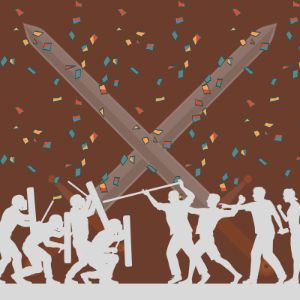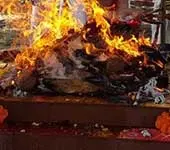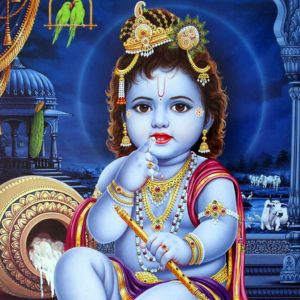Do Homas and Yajnas still Work in Kaliyuga?
Transcript
(Click here to read more)
Here's your text with corrections: --- Do Homas and Yajnas still work in Kali Yuga? Because we have sayings like: "कलौ केशवकीर्तनात" - In Kali Yuga, you are benefited only through the keerthana of Keshava. "दानमेकं कलौ युगे" - In Kali Yuga, the one and only method is daanam. Does it mean that Homas won't yield results? No. It's not like that. They don't carry this meaning. In Purva Meemasa darshana, there is something called Arthavada. Terms of Arthaveda are not ....
Transcript
(Click here)
Here's your text with corrections:
---
Do Homas and Yajnas still work in Kali Yuga? Because we have sayings like:
"कलौ केशवकीर्तनात" - In Kali Yuga, you are benefited only through the keerthana of Keshava.
"दानमेकं कलौ युगे" - In Kali Yuga, the one and only method is daanam.
Does it mean that Homas won't yield results? No. It's not like that. They don't carry this meaning. In Purva Meemasa darshana, there is something called Arthavada. Terms of Arthaveda are not conclusive inferences. The purpose of these terms is to praise something to encourage you to do that. You should not take terms or statements of Arthavada in their literal sense. They don't provide decisive information. The primary purpose of Arthavada is to serve as a means of praise or commendation, intending to inspire and motivate you to engage in particular actions. Arthavada employs a language of praise and encouragement to highlight the virtues or benefits associated with certain actions. You need to understand the underlying message and intention behind the words and not its literal meaning. Statements of Arthaveda utilize praise and encouragement as a persuasive tool. You should avoid their rigid interpretation and only go for the broader spirit of motivation that these expressions aim to convey. So the statement "कलौ केशवकीर्तनात्" is simply intended to encourage someone to engage in Keshava keerthanam. It doesn't mean that nothing else works in Kali Yuga. Similarly, "दानमेकं कलौ युगे" just praises and encourages you to perform daanam. It doesn't mean that nothing else works.
Homa is a replica of a cosmic act that takes place in the sky from the time of creation. In the sky, the Sun is the Homa Kunda and Soma or the Moon is what is being offered in that Kunda. See, in Krishna Paksha, one part of the Moon disappears every day as it progresses. Where is it going? It is being offered in the Sun. This is Divya Yajna. Parthiva Yajna or the Homas that we perform on earth are based on the divine yajna. They will be effective till the time of the dissolution of the universe. That's why Veda itself says - "यज्ञो हि श्रेष्ठतमं कर्म" - among all actions, Yajna is the greatest. And you should remember that Yajna or offering in Agni is the most fundamental form of worship in Sanatana Dharma, and it still remains so.
Recommended for you
Atharva Veda Mantra For Defeat Of Rivals

अमूः पारे पृदाक्वस्त्रिषप्ता निर्जरायवः । तासां जरायु�....
Click here to know more..Do you know why we use chandana and flowers in Puja?
 Click here to know more..
Click here to know more..
Bala Mukunda Panchaka Stotram

avyaktamindravaradam vanamaalinam tam punyam mahaabalavarenyamanaadimeesham. daamodaram jayinamadvayavedamoortim baalam mukundamamaram satatam namaami....
Click here to know more..
English Topics
Rituals
Click on any topic to open
- 74 What happens after accident or suicide deaths?
- 73 Do Homas and Yajnas still Work in Kaliyuga?
- 72 How Do Remedial Homas Work?
- 71 Hindu Beliefs About Menstruation
- 70 The Significance Of Following Rules While Observing Vratas
- 69 Tamil Brahmin Wedding Rituals
- 68 Significance Of Turmeric And Kumkum
- 67 Medicinal Properties Of Panchamrita
- 66 Tamil Brahmin Death Rituals
- 65 Dana Mantra
Please wait while the audio list loads..
30
Ganapathy
Shiva
Hanuman
Devi
Vishnu Sahasranama
Mahabharatam
Practical Wisdom
Yoga Vasishta
Vedas
Rituals
Rare Topics
Devi Mahatmyam
Glory of Venkatesha
Shani Mahatmya
Story of Sri Yantra
Rudram Explained
Atharva Sheersha
Sri Suktam
Kathopanishad
Ramayana
Mystique
Mantra Shastra
Bharat Matha
Bhagavatam
Astrology
Temples
Spiritual books
Purana Stories
Festivals
Sages and Saints
